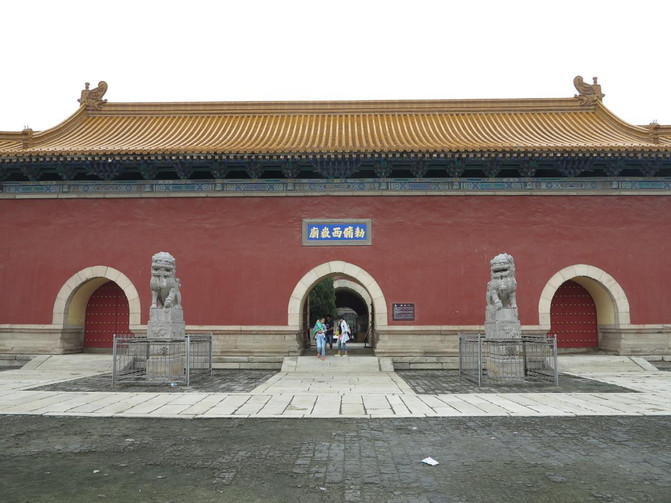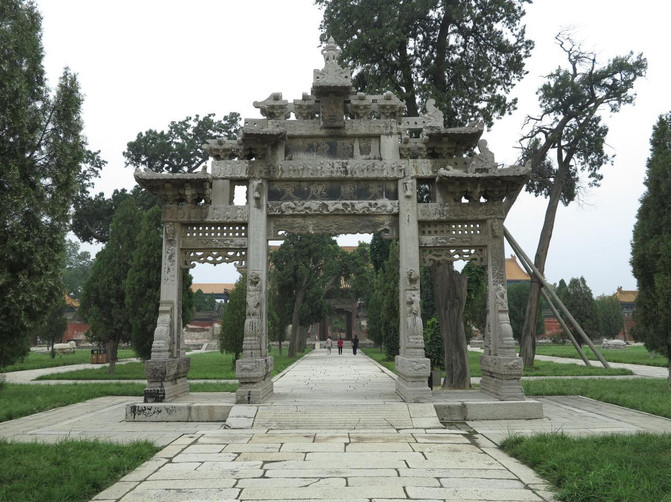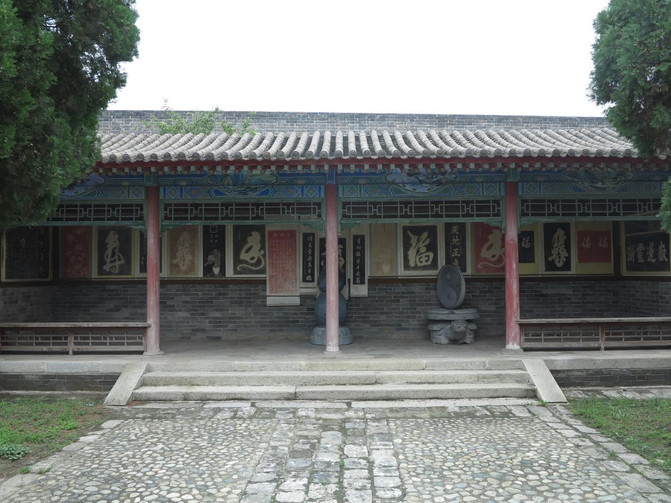The First Temple of the Five Mountains is ignored by many tourists in Huashan Mountain
China is so big, I want to visit it. Take you to a place you have been or have not been.
The First Temple of the Five Mountains is ignored by many tourists in Huashan Mountain
Huashan Mountain among the five mountains is famous for its "danger". Because the cableway up the mountain has been built, it is no longer "a road along Huashan since ancient times". Tourists from Xi'an can completely "make a day trip" and return to Xi'an. The fast era is also an era that is missed.
Huashan

All five mountains have mountain gods, which are god's dojo. Xiyue is dedicated to the god of Huashan Mountain and one of the legendary "Five Emperors", the Bai Emperor Shaohao. Xiyue Temple is a sacrificial temple where emperors sacrificed to the god of Xiyue. Among the Five Mountains, Xiyue Temple is the largest and has the reputation of "the First Temple of the Five Mountains". Red walls and yellow tiles are used exclusively for the royal family. There are cities in the city and are stacked on top of each other. They are called the Shaanxi Little Forbidden City.
Xiyue Temple Altar

Xiyue Temple is located east of Yue Town, Huayin City, 5 kilometers away from the northern foot of Huashan Mountain. In the first year of Yuanguang of Emperor Wu of the Han Dynasty (134 BC), Emperor Wu of the Han Dynasty built the first temple to worship the Xiyue God-Jiling Palace at the foot of Huashan Mountain. Later generations felt that the journey was too hard, so they moved the temple to its current address during the Eastern Han Dynasty., and renamed it "Xiyue Temple". Since the Han Dynasty, there have been repeated renovations and additions in the past dynasties. During the dynasties, emperors personally went to Huashan to make sacrifices 9 times and sent officials to make sacrifices 183 times. The folk custom is to "go up the mountain and go to the temple to pray for peace."



Xiyue Temple faces north to south, with the temple gate facing Huashan Mountain, and the gate is opened just south of the city. Weng City is also set up to form a dual gate. The inner city is commonly called the inner palace, which is divided into front and back houses. The overall building has a pattern of low front and high back.
There are cities in the city and the city walls are stacked on top of each other







On the central axis from north to south are Haoling Gate, Wufeng Tower, Lingxing Gate, Jincheng Gate, Haoling Hall, Bedroom, Imperial Book Tower, and Wanshou Pavilion.
screen wall

Glazed shadow wall (commonly known as Zhaobi) was built in the Ming Dynasty. Officials used it as a shelter and decoration for palaces and temples; people used it to avoid demons and exorcise evil spirits. Such a size of the screen wall screens the palace and courtyard, which is a symbol of class. Stone railings are set on the left and right sides, unique to the sacrificial temple.
Haoling Gate

The first gate of Xiyue Temple, the main gate of Wengcheng, is commonly known as the "Liansanmen". Hao Ling is powerful and powerful. The lintel "Xiyue Temple was built". As usual, the main entrance is only reserved for the emperor. Civil and military officials walk through the east and west doors, and the three doors directly face the three doors of the Meridian Gate.
Wumen Gate (Wufeng Building)


It was built during the Chenghua period of the Ming Dynasty. The second gate of Xiyue Temple is the main gate of the Emperor Palace City, which is the main gate of the Outer City. In the capital, Wumen Gate is a place where officials retire and return home to bid farewell to the emperor. In Xiyue Temple, it is only a symbolic imitation of a royal palace building to show its high rank.
Because it is located in the "middle of the south" and the south and south of the four directions are the rosefinch, it is also called "Fengmen" and "Wufeng Tower". "It is a thousand feet away from the earth, and in the sky, the five phoenixes are flying." Therefore, it is called the "Meridian Gate" below and it is called the "Five Phoenix Tower" above.
lattice Star Gate




Built in the Qing Dynasty, the front yard gate of the inner palace. The three wooden archways are made of brick and laminated walls to form a "connected three doors" form and are covered with yellow glazed tiles. Dougong is placed under the eaves, and in the center of the Ming Tower is the "Honeycomb Dougong", carved with nine dragon heads and the honor of the ninth five-year-old, reflecting that Xiyue Temple is a royal ancestral temple. However, almost all the highest-level sacrifices are in the capital, and Xiyue Temple is a mid-level temple and cannot be overstepped. Therefore, seven dragons are fully exported, and the other two dragons are obliquely exported. There are seven rows and nine columns of door nails in the Lingxing Gate, which is one level lower than the nine rows and nine columns.
"Tianwei Close" stone archway


Built in the Wanli years of the Ming Dynasty (1573-1620), it has an imitation wooden structure with four columns, three bays and a fifth floor. It is the largest and best-preserved stone archway in the temple. The upper layer of the archway is engraved with "Imperial Construction" vertically, the middle layer is inscribed with "Extreme Dignity" horizontally, and the lower part is inscribed with "Tianwei at Hand". It is said to be written by the traitor Yan Song. The archway uses various techniques such as round carving, embossed, line carving, and open carving to carve figures, dragon groups, unicorns, lions and beasts, various rolling grass patterns, etc. It almost uses all the animals and plants that symbolize good luck in ancient Chinese traditions. Its artistic value is eye-catching.
Jinchengmen


Built in the Ming Dynasty, the main entrance of the backyard of the inner palace is also known as the "heavy door". Located in the south of the core hall, Haoling Hall, it has five rooms wide and three rooms deep. The Golden City Gate means "the strength of Guanzhong, the Golden City is thousands of miles away."
Jinshui Bridge, Haoling Temple


The Jinshui Bridge leads to the Haoling Hall, the main hall of Xiyue Temple. The Jinshui Bridge is also known as the "Wangxian Bridge". It has a three-arched stone bridge. The flowing water under the bridge is called the Yudai River. The spring water finally flows into the release pool behind the temple.
Haoling Hall was built in the Ming Dynasty and renovated in the Qing Dynasty. It is the main hall of the inner palace and the backyard, which is the main hall of Xiyue Temple. It is dedicated to the Bai Emperor Shao Hao and is the temple where emperors of past dynasties worshipped. Unfortunately, I was in the middle of maintenance when I went there.
yushulou

A place where the emperor could read. It was built in the forty-second year of Qianlong of the Qing Dynasty (1777) and contained a reclining stele of Qianlong's imperial book "Yue Lian Lingshu". Yue Lian pointed to Huashan Mountain because its mountain looked like a lotus flower. Local officials and people often pray for rain in front of Huashan Mountain and can do so, so it is called "Lingshu".
ten thousand years Pavilion


It was built during the Wanli Period of the Ming Dynasty. It was originally a Sutra Pavilion, also known as the "Wanghe Tower"(climbing the building and hoping to see the Yellow River), and was rebuilt in modern times after it was destroyed. Stand on a brick high platform with 60 steps from bottom to top. The pavilion has three floors below, five rooms wide, and is covered with yellow glazed tiles. The "Wanshou Pavilion" plaque hangs on the south side of the top floor.
On both sides of the central axis of Xiyue Temple are the Bell Tower, Drum Tower, Lingguan Hall, Yingyuan Hall, Lvzu Hall, Wanghua Pavilion and Stele Pavilion.
Shipailou, the capital of Shaohao
It was built during the Wanli period of the Ming Dynasty. Shaohao, one of the "Five Emperors", was also the god of Huashan Mountain in Xiyue. The Zhou Dynasty called fiefs states, cities with ancestral temples or gods of ancestors called capitals, and cities without cities. The capital of Shaohao means the place where the Yue God governs politics in the lower realm.

Shangyu Stele Pavilion

In the 40th year of Qianlong, Shaanxi suffered a severe drought, and Bi Yuan, then governor of Shaanxi, was ordered to go up the mountain to pray for rain. The Huashan God showed his spirit, and sweet rain fell for three consecutive days, alleviating the drought. Bi Yuan replied that because the emperor loved the people like a son and moved the Yue God, an effective and timely rain fell. But you can see that the Huashan God's home is very dilapidated, and now you need to allocate money to rebuild it. Qianlong immediately ordered the House of Internal Affairs to allocate 120,000 taels of silver to Bi Yuan for verification. The Internal Affairs Office was the emperor's "private money" treasury. The inscription records this matter and is a model of ancient official documents.



The first monument in the world
During the reign of Emperor Xuanzong of the Tang Dynasty,"Xuanzong was born in Yiyou, and he took Huayue as his original life"(You was the west, corresponding to Xiyue, and his original life came from this). In the ninth year of Tianbao (750), ministers petitioned to worship Xiyue Mountain. Emperor Xuanzong of the Tang Dynasty ordered people to dig Huashan routes and set up mountain sacrificial mandalars. The monument was engraved to record that "it is more than fifty feet high, more than ten feet wide, and four or five feet thick. The monument in the world is the greatest." In the first year of Guangming (880) of Emperor Xizong of the Tang Dynasty, it was destroyed by the Huang Chao Army, and now only part of the stone remains.
Many Huashan tourists choose a "One-Day Tour to Huashan". In fact, the package includes the main scenic spot of Huashan, Xiyue Temple and Xianyu. Even if you didn't go, the money would have been spent.
July 2014 Huashan Scenic Area Tickets 180 yuan

For more content, you can see my namesake "Travel of a Bug" and other self-media: Baijia Accounts/Sohu Accounts/Weixin Official Accounts/Today's Headlines/Little Information/Fun Headlines/Big Fish
Previous Article:Xi'an City New West Business Entrepreneurs Association is on the front line of the fight against the epidemic
Next Article:Experience the style of the "Ancient Capital City"--Xi'an High-tech Vientiane Hui Mulianzhuang Hotel
